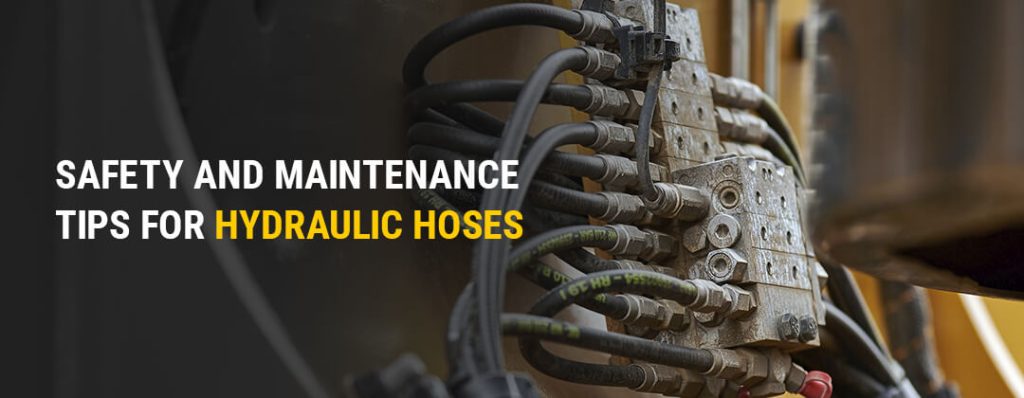Hydraulics is a powerful technology used in many industries to transfer power and control systems. By understanding how hydraulic hoses are made and their various applications, one can gain an appreciation for the sophistication of this system. Hydraulic hoses provide a reliable means of connecting components together, allowing for efficient operation under high temperatures and pressure.
This article will explore the structure of hydraulic hoses and describe their importance in powering complex machines from industrial manufacturing equipment to construction vehicles. We will also discuss some common uses for these hoses and offer helpful tips on maintenance so that you can keep your hydraulics running smoothly.
Types of Hydraulic Hoses and Their Uses

Source: .rycohosesouthwest.com.au
There are several types of hydraulic hoses used in various applications. Each type has a unique set of features that make it suitable for certain tasks. A few common types and their uses include: Braided Hoses – Braided hoses are designed to be highly flexible and resistant to kinking, making them ideal for use in tight spaces or around sharp corners. They’re able to withstand high pressure without bursting and come with a variety of end fittings for attaching other components.
These hoses are often used on construction sites, as well as automotive repair shops and industrial settings. Reinforced Rubber Hoses – Reinforced rubber hoses provide superior flexibility and durability over standard rubber hose products due to an inner layer of reinforcement material such as nylon cord or steel wire braid. This provides additional strength at the hose ends, reducing chafing, wear-out, failure from fatigue or vibration damage over time due to fluctuating pressures or temperatures.
Commonly found in mobile equipment (such as crane hoists), they can also be useful when needing abrasion resistance while carrying fluids under higher pressures than braided hoses can handle. High Pressure Hydraulic Hose – High pressure hydraulic hose is made with synthetic rubber coverings which provide extra protection against abrasion and weathering elements that may cause cracking or splitting the outer coating when subjected to extreme temperatures or continual movement between different work areas where conditions vary greatly from one job site to another.
These specialized components have reinforced layers that allow greater working pressures compared with standard lines while providing better flexibility during operation too; thus allowing users more versatility when configuring setups based upon particular requirements needed on any given project task being performed at hand!
Installation and Maintenance Considerations for Hydraulic Hoses
Installing and maintaining hydraulic hoses is a critical part of any successsful system. Generally, a qualified technician should be consulted prior to installation or maintenance. To ensure optimal performance and longevity, it is important that the correct hose is chosen for the application, as different types of hydraulic hoses are designed to handle specific pressures and temperatures.
When installing new hoses, cleanliness is essential in order to maintain system efficiency and reduce wear on components. Its also important to check for signs of damage such as cracks or bulges before fitting them; if any faults are found then they should be replaced immediately. Connecting fittings must also be correctly aligned and tightened according to manufacturer specifications in order to prevent leaks or other failures that can cause downtime in machinery operations.
Maintenance requirements vary depending on the type of hose used however regular checks are recommended including visual inspections; checking all connections; ensuring bends/fittings arent over-tightened; replacing worn seals where necessary; flushing old fluid from lines when changing between systems with differing fluids (such as hydrocarbons); protecting against corrosion through insulation/shielding etc., monitoring pressure gauges regularly etc.. Taking these steps will help extend the life span of your hydraulic hoses ensuring reliability, safety and maximum productivity for your equipment.
Benefits of Using Hydraulic Hoses
Hydraulic hoses are an important component of any hydraulic system and provide a variety of benefits that make them invaluable. One of the most significant advantages these components offer is improved performance, allowing machines to operate more efficiently while consuming less energy.
Hydraulic hoses also help reduce downtime by preventing leaks and other potential damage from occurring in hydraulic systems, thereby increasing the lifespan of machinery and reducing maintenance costs. Moreover, hydraulic hoses can be easily customized with different types of fittings for better compatibility with various types of equipment, making it easier to integrate new technologies into existing systems.
Finally, because they are highly flexible compared to rigid pipes or tubes used in traditional plumbing systems, hydraulic hoses allow for greater freedom when installing complex piping configurations. All these features combined make using hydraulic hoses a smart choice when building or maintaining any kind of machine powered by hydraulics.
Safety Precautions When Working with Hydraulic Hoses

Source: .gregorypoole.com
When working with hydraulic hoses, it is important to take certain safety precautions to ensure the job is completed correctly and safely. When connecting a hose, make sure all connections are tight and secure before pressurizing the system. Always wear protective gear such as gloves, goggles, and closed-toe shoes when handling hoses or any other piece of equipment related to hydraulics.
Inspect your hoses regularly for signs of damage such as bulging or splitting due to overpressure or kinking from improper routing. If you notice any signs of damage: replace the hose immediately; do not attempt repairs.
Additionally, be sure that all fittings are compatible with each other and also rated for the pressure required by your application before beginning work on a hydraulic system. Following these simple steps will help protect personnel while using hydraulic systems efficiently in their workplace.




